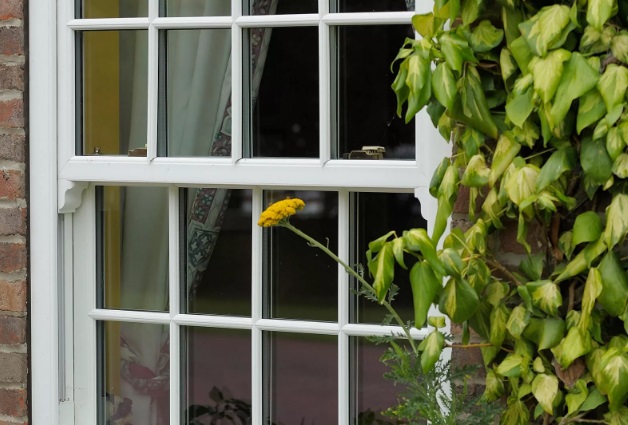
Weathering the Elements: Timber Window Repairs in Celtic Counties
Timber windows have long been a hallmark of the architectural landscape in Celtic counties such as Ireland, Scotland, Wales, Cornwall, and Brittany. However, the rugged coastal climates and unpredictable weather patterns of these regions can take a toll on timber windows over time. From exposure to moisture and salt air to the relentless force of wind and rain, timber windows in Celtic counties require regular maintenance and occasional repairs to withstand the elements and preserve their beauty and functionality. Here’s a comprehensive guide to timber window repairs in Celtic counties, highlighting common issues, repair techniques, and preventative measures.
- Understanding Common Issues: Timber windows in Celtic counties are susceptible to a range of weather-related issues that can compromise their structural integrity and performance. These issues include:
- Rot and Decay: Moisture infiltration can lead to rot and decay in timber frames and sills, particularly in areas exposed to rain and humidity.
- Warping and Swelling: Fluctuations in temperature and humidity can cause timber windows to warp, swell, or distort, leading to difficulty in operation and compromised insulation.
- Paint Failure: Harsh UV exposure and salt air can cause paint or protective finishes to deteriorate, leaving timber windows vulnerable to moisture infiltration and decay.
- Draughts and Air Leaks: Gaps and cracks in window seals or glazing putty can allow cold air, rainwater, and pests to enter the interior space, compromising energy efficiency and comfort.
- Repair Techniques: Timber window repairs in Celtic counties often involve a combination of restoration, maintenance, and preventative measures to address weather-related damage and prolong the lifespan of windows. Common repair techniques include:
- Rot Repair: Damaged timber sections affected by rot or decay can be carefully removed and replaced with sound wood using epoxy resin or wood filler. Rot-affected areas should be thoroughly cleaned, treated with fungicides, and sealed to prevent further deterioration.
- Weather Stripping: Installing or replacing weather stripping along window sashes and frames can improve insulation and reduce draughts, enhancing energy efficiency and comfort. Weather stripping materials such as foam tape, rubber gaskets, or brush seals help create a tight seal and prevent air leaks.
- Repainting and Refinishing: Sanding, priming, and repainting timber windows with high-quality exterior paint or protective finishes can restore their appearance and provide long-lasting protection against moisture, UV damage, and salt air. Proper surface preparation and application techniques are essential to ensure a durable and weather-resistant finish.
- Glazing Replacement: Cracked or damaged window glazing putty should be carefully removed and replaced with fresh putty to maintain a watertight seal and prevent moisture infiltration. Alternatively, modern glazing compounds or silicone sealants can be used for improved durability and flexibility.
- Hardware Maintenance: Lubricating hinges, locks, and other hardware components regularly with silicone spray or graphite lubricant helps ensure smooth operation and prevents corrosion or rusting due to exposure to moisture and salt air.
- Preventative Measures: In addition to regular maintenance and timely repairs, implementing preventative measures can help mitigate weather-related damage and prolong the lifespan of timber windows in Celtic counties:
- Routine Inspection: Conducting regular inspections of timber windows for signs of damage, decay, or wear allows homeowners to identify issues early and address them before they escalate. Inspections should include checking for rot, warping, peeling paint, draughts, and air leaks.
- Proper Ventilation: Ensuring adequate ventilation around timber windows helps prevent moisture buildup and condensation, reducing the risk of rot, decay, and mould growth. Opening windows regularly to allow for air circulation and using exhaust fans in bathrooms and kitchens can help maintain a healthy indoor environment.
- Exterior Maintenance: Trimming vegetation, such as trees and shrubs, away from timber windows helps prevent excess moisture accumulation and reduces the risk of pest infestations. Cleaning gutters and downspouts regularly to prevent water from pooling near windows and causing water damage.
- Professional Restoration: Consulting with experienced professionals, such as carpenters, joiners, or restoration specialists, for comprehensive timber window restoration and maintenance services ensures proper diagnosis, repair, and preservation of historic or heritage windows.
Timber window repairs in Celtic counties are essential for preserving the beauty, functionality, and longevity of these architectural features in the face of challenging weather conditions. By understanding common issues, implementing effective repair techniques, and adopting preventative measures, homeowners can ensure that their timber windows withstand the elements and continue to enhance the character and charm of Celtic homes for generations to come.
